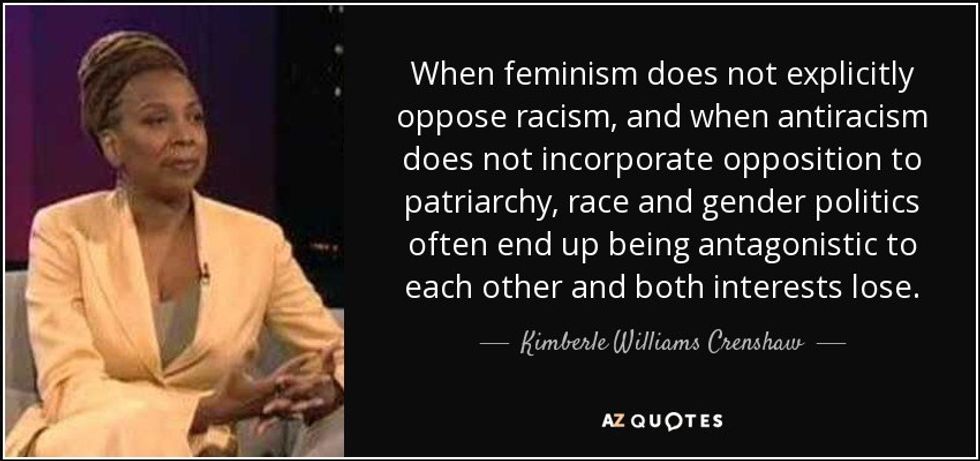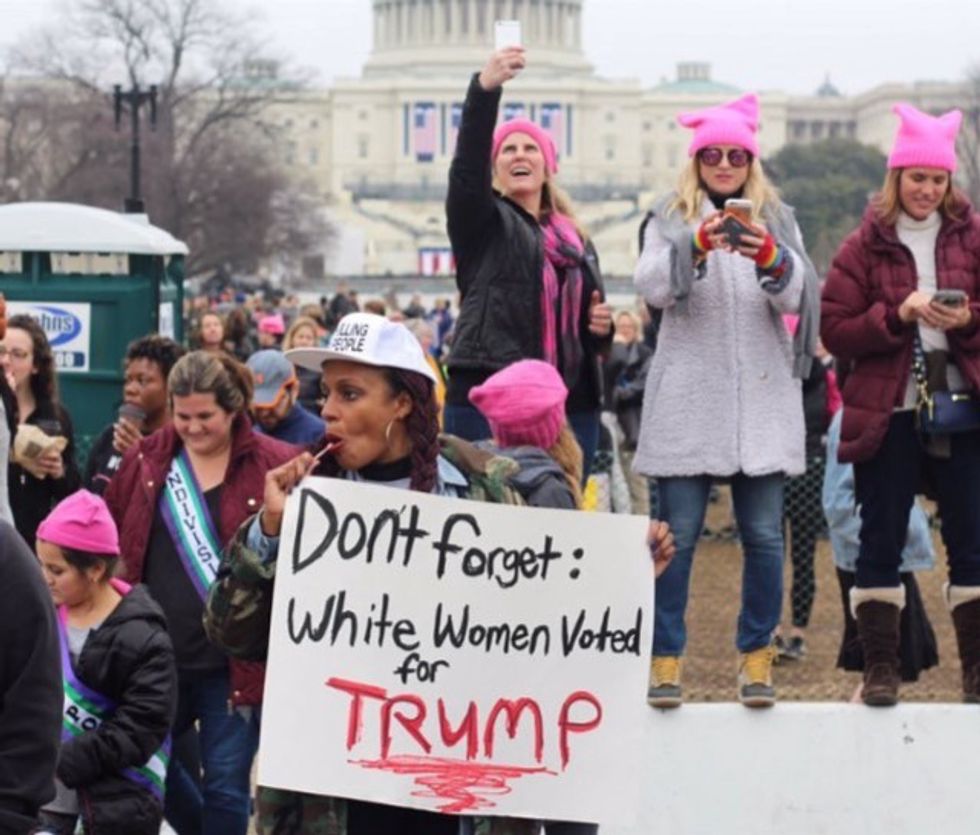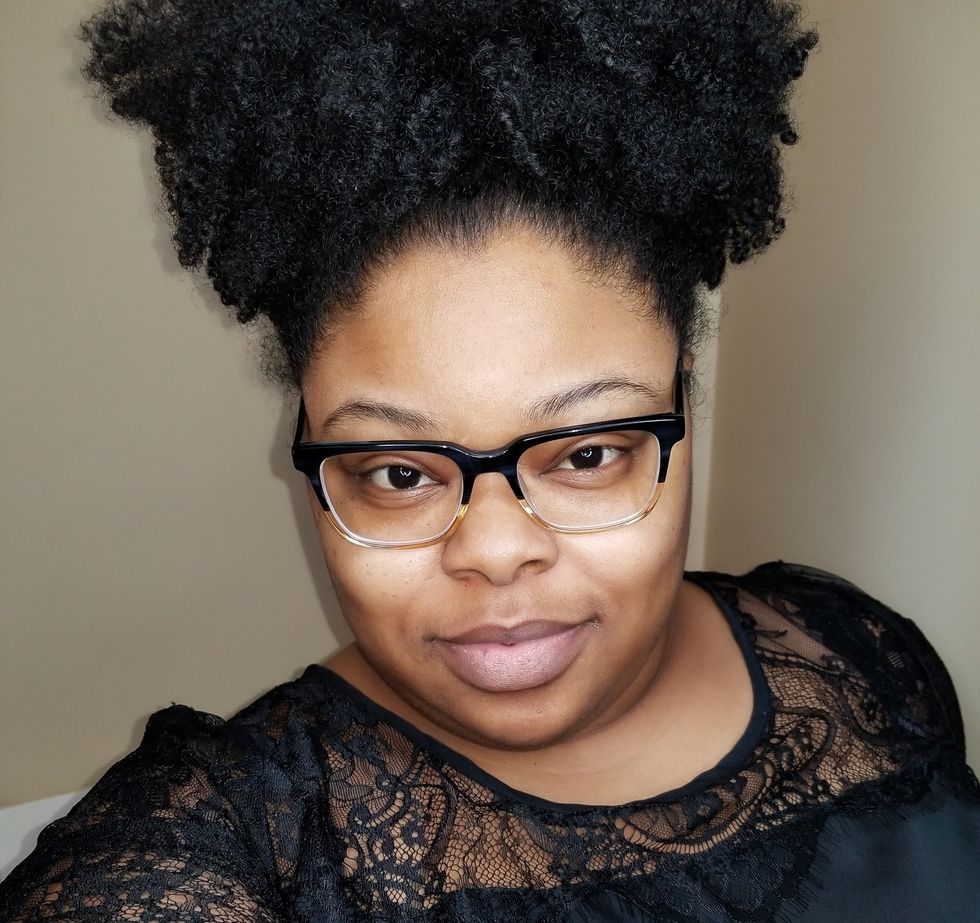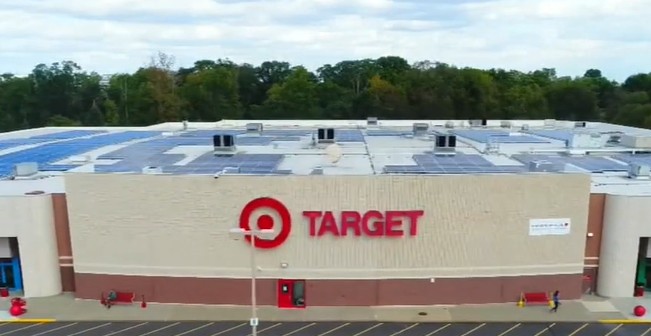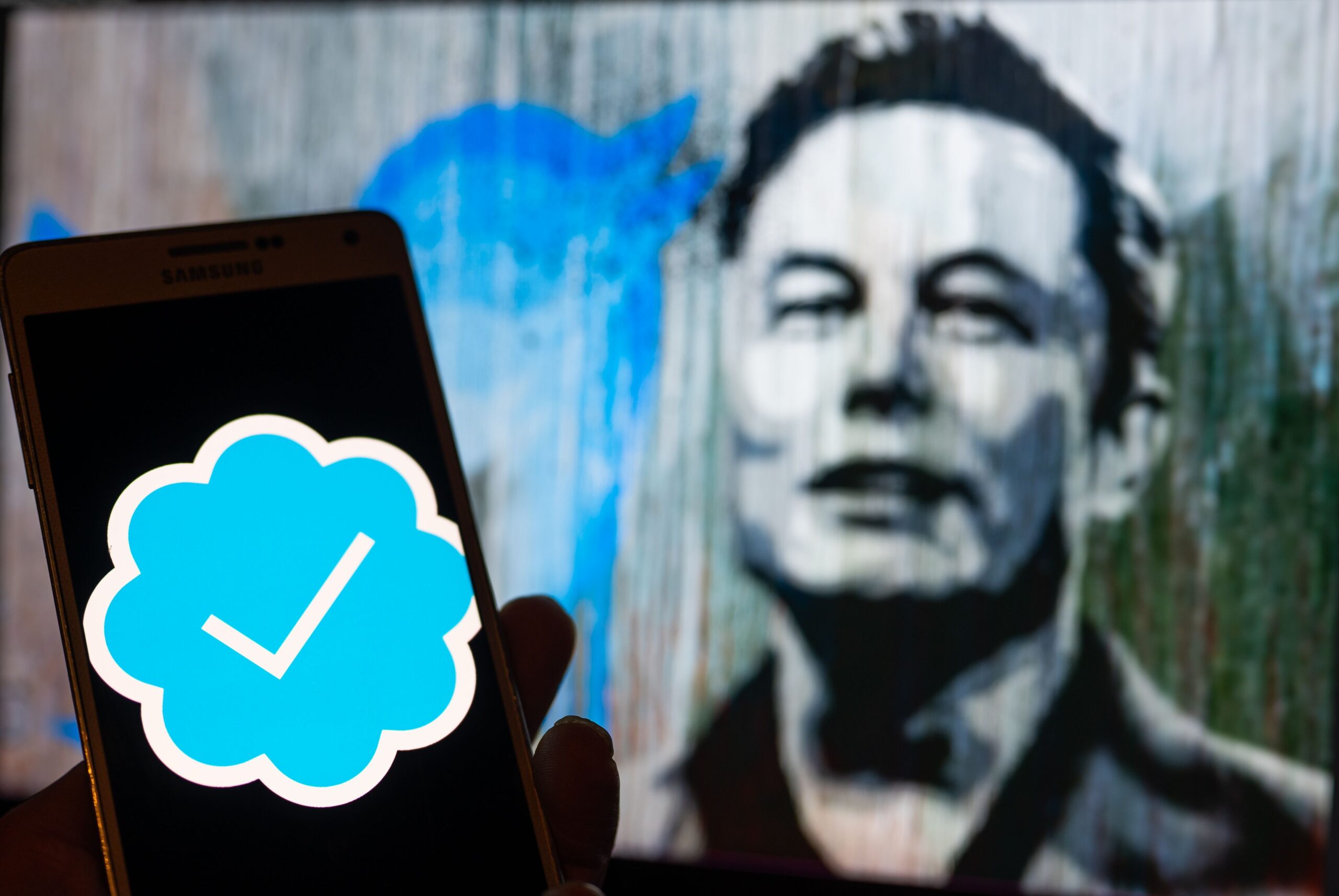As our first installment of the Visionaries Project, we’re beyond honored to feature Sherronda J. Brown, an incredibly eloquent and brilliant journalist and activist currently doing vital work in the media sphere.
Where did you grow up? Was there an activism or writing background in your childhood?
I grew up in a small town called Tarboro in Eastern North Carolina. I don’t have an activism background from my youth, but I have always been a writer. My mom still has a stack of little books I wrote as early as Kindergarten and first grade.
Can you tell me a little bit about how you got into writing and journalism?
I don’t think writing was much of a choice for me. I think it’s something that just lives in my bones and my fingertips. If I wasn’t writing about systemic oppression and its multiple arms, I’d almost certainly be writing in some other capacity, probably in entertainment media or true crime. Definitely true crime. Hell, I might still do that one day.
My foray into journalism was more like being pulled into it. I have always shared my views on social media, specifically Facebook, and eventually people started to follow me and root for me. To my surprise, my words touched people. I wrote briefly for a now-shuttered, indie feminist website (for free!) while in college many years ago, but my presence in this world really became solidified when current Managing Editor at Black Youth Project (BYP), Hari Ziyad, gave my writing a home at RaceBaitR and later encouraged me to write for BYP as well. Then, the Deputy Editor position came along, and Hari encouraged me to take another step. The next step was Wear Your Voice (WYV), where I was promoted to Managing Editor by founder Ravneet Vohra before I even knew what hit me. And here I am. Other people recognized my talents and potential before I did. They knew I could do this before I even knew it was an option. Shout out to imposter syndrome, and shout out to the people who helped me get here.
How did you get involved with Wear Your Voice? What work do you do for it, and what’s the publication about?
Lara Witt, the current EIC, posted a call for pitches on social media and I submitted a piece about an indie film I had been really impressed by, The Keeping Room. This was just after the release of Sofia Coppola’s remake of The Beguiled, and I argued that The Keeping Room—while an imperfect film—succeeds where Coppola’s film fails, specifically in her erasure of an enslaved Black woman character from the Civil War era South in order to ensure that the Confederate white women are seen as indisputable victims within the story, rather than cruel enslavers. The essay did very well, so much so that the writer and producer, Julia Hart and Jordan Horowitz, reached out to thank me. That was a surprise and, of course, hugely flattering. From that point, I continued to write for WYV as a freelancer, until I got the courage to ask Lara if she needed any editorial support. She advocated for me and helped me become a part of the team, beginning as a part-time Social Media Manager. I will always, always be so grateful to her for that, especially because WYV is such an amazing publication to work for. I now get to say that I serve as the Managing Editor of a bold magazine that wholly embraces me and gives QTBIPOC space to talk about our experiences without tone policing or censorship. It’s incredibly rewarding and therapeutic work for me.
The bio for Wear Your Voice cites Kimberlé Crenshaw’s definition of “intersectionality.” How would you define intersectionality? Has your understanding of it changed over time?
A lot of people misunderstand or wrongly define intersectionality, and I suppose I used to do the same. Once upon a time, I thought of it as a literal intersection, with multiple roads meeting and touching at a particular point, with each road being a different aspect of a marginalized identity. So, one road would be Black, one would be woman, one would be queer, and so on, and they would intersect with each other. In this visual representation, the points where they intersect would be the nucleus, where all the layered oppressions one experiences are most concentrated, for lack of a better phrase.
Now, I understand how wrong I was. Because, for a queer Black woman, Blackness is never separate from woman, is never separate from queer, and so on. More specifically, Kimberlé Crenshaw developed this theory and coined this term thirty years ago for Black women to think and talk about how we experience misogynoir. Intersectionality is specifically for Black women’s benefit, and Crenshaw herself has told us not to use it as a blanket term for thinking about oppressions.
What do you mean by “digital activist,” as you say in your bio? What potential do you see in digital activism going forward?
It’s funny, I didn’t realize that I was a digital activist until someone told me I was. I guess, I didn’t really understand the true impact that my words were making. One of my favorite anecdotes—or maybe it’s a testimony—is from a woman who said that my writing helped her get her teenage daughter to stop bleaching her skin. That made my heart sink and sing at the same time. People reach out to me periodically to share how I’ve helped them to think about things from a new perspective and better understand how oppressive systems work and even how they have participated in and benefited from them. That’s the best reward for me. A lot of people don’t consider digital activism to be valid. People like me often get called “armchair activists” as an indictment of our supposed laziness, which is quite an ableist sentiment. There is tremendous value in digital activism, whether or not people are physically or mentally healthy and able enough to contribute to “boots on the ground” work, and I don’t just say this because I consider myself one. Think about how much information gets shared across social media by marginalized people that might not otherwise be reported on by the mainstream media. Digital activism can and does enact change in its own way, and there are plenty of examples.
If you see yourself as a resource for awareness or inspiration for activists and radical thinkers, what would you recommend to others looking to get into the type of work you’re doing?
I know this is easier said than done, but take the leap. Shoot your shot. Send that pitch email. Read other people’s work, digest it, process it, live in it. And then, find the gaps. With any given subject, there’s always someone who has already written about it, of course, but there are always things left unsaid, views left unexplored. No one person can tackle every possible angle. Find the gaps that other people inevitably leave in their work and fill them. Address the unaddressed. That is how writers can set themselves apart, in my opinion. That’s what I really appreciate as an editor and a reader.
Are there any projects or current topics you want to promote?
We are currently wrapping up our Summer of Sex campaign at WYV, a series that highlights perspectives of QTBIPOC [Queer, Trans, Black, Indigenous, People of Color] on the subject of sex and the things surrounding it. The piece I contributed to this is rather personal, maybe more personal than anything else I’ve ever written. In it, I do what feels for me like heavy lifting on the subjects of unhealthy sex, asexuality, celibacy, and fawning as a trauma response, as all of these relate to my personal story and life experience. These are topics I rarely see talked about openly and I would like to see others engaging with them as well.
You describe yourself as a “reformed Blackademic.” What was your experience in academia and why did you choose to move towards digital media?
I had no idea I would end up here. For a long time, I thought I would be an academic, and I had plans to pursue a doctorate. The bureaucracy and high pressure of the institution turned out to be something I wasn’t cut out for, and I’m perfectly fine with that. I call myself a reformed Blackademic because stepping back from academia allowed me to see how elitism and inaccessibility can sometimes be a barrier to connecting with our own communities. If my work isn’t accessible to those outside of higher education, then I don’t think it’s actually doing as much work as we might assume. This isn’t to say that there isn’t value in academic thought and high theory. Of course there is, and the things I learned while pursuing my degrees absolutely continue to inform my current work. I’m just more intentional about making my work accessible, as much as I can, and I will hopefully continue to make more progress in that arena through digital media.
What are your favorite writing projects or stories you’ve covered over the years?
My favorite projects are the ones that allow me to blend my passion for entertainment media with my radical, leftist, Black feminist, anti-capitalist philosophies. I’d say I’m currently most fond of my analysis of Thanos and his flawed Malthusian logic system about overpopulation and my laments on the unfortunate pattern of Black horror stories and Black time travel narratives that seem to only contemplate white violence as a constant fixture in our lives.
You’ve written a lot about your interest in horror and haunting narratives. Can you tell me a little bit about that?
I became interested in hauntings in grad school, in terms of how the ghosts of history continue to haunt our lives everyday and how we see those ghosts manifesting in oppressive systems, and these things often show up as literal ghosts in cinematic haunting narratives, like literally any film that uses a “Native American burial ground” as a way to convey danger and terror for white protagonists only to ultimately subdue the ghosts rather than truly acknowledge and hold accountable the violent white colonialism that created them.
Candyman (1992) is also a prime example with the vengeful ghost created from a lynching, and it is one of my personal favorites, despite it ultimately being yet another story of a frightened white woman being lusted after by a Black man. Choosing favorites is always difficult, because it changes every few years, and I love so many. Train to Busan (2016), Tigers Are Not Afraid (2017), Hereditary (2018), and The Babadook (2014) are some of my contemporary favorites, but Psycho (1960), The Exorcist (1973), Night of the Living Dead (1968), and Invasion of the Body Snatchers (1956) are longevity faves.
When you say “new voices” in horror, I immediately think of Jordan Peele, of course, who has two amazing horror entries already, which are among my favorites as well, and is sure to bring us more. He’s tapped Nia DaCosta to direct his Candyman “spiritual sequel” expected in 2020, and I am ecstatic about a Black woman directing such a huge mainstream horror film. It would be a dream to see more Black women, more queer folks, more trans folks, more disabled folks at the helm of these stories. I want to see people who have historically been largely relegated to monstrosities in horror giving us innovative tales that subvert the status quo and rattle us in new, challenging ways.
You write a lot of content that challenges hegemonic, white supremacist narratives and ways of reporting and understanding current events; for example, the idea that climate change is new/just beginning to show effect, or that BIPOC women’s bodies haven’t always been byproducts of white supremacist violence. What writers, sources, or strategies have helped you challenge these hegemonic narratives? What kind of anti-oppression work do you see coming to the fore and/or still needing to be done in terms of this?
My first piece of writing that went viral viral was “White Women In Robes” on my personal blog, werdbrew. It was a critique of The Handmaid’s Tale‘s use of harms committed against BIPOC in a story that centers white women and white feminism’s historical connections with white supremacy, among other things. Dorothy E. Roberts’ “Killing the Black Body” greatly informed that piece of writing, and anything else I’ve written about the reproductive control of and expectations for Black people. I also carry Audre Lorde, Alice Walker, and Angela Davis with me daily, and the spirits of Harriet Tubman and Zora Neale Hurston. The voices of Patricia Hill Collins, Nina Simone, and Toni Morrison are always with me when I write about Black womanhood. Some more recent entries that have inspired me include Tressie McMillan Cottom’s “Thick” and Sabrina Strings’ “Fearing the Black Body,” both amazing and important works. I just think Black women are so brilliant and so uniquely able to Illuminate ugly but necessary truths about our world. Black women are already doing crucial anti-oppression work, and always have been. People just need to listen.
You write that white dystopian narratives align with the “destruction of the dominant white society, the disruption of the white heteropatriarchal family unit, and the downfall of post-colonial civilization as a whole” in one of your reviews. What kind of disruption would you like to see, and are there any images of the future that you imagine seeing through and beyond this disruption?
That is the kind of disruption I like to see. In a perfect world, we would finally get to see all the remnants of white colonialism gone, but unfortunately that is not our reality. I don’t mind at all that dystopian narratives involve this kind of destruction in the fantasy world, especially because the destruction of a society where white supremacists hold political, economic, and social power only creates possibilities for the rest of us. My issue is that these narratives—with the exception of The Girl With All The Gifts (2017)—never explore those new opportunities or acknowledge the fact that QTBIPOC already live in a dystopia in the real world.
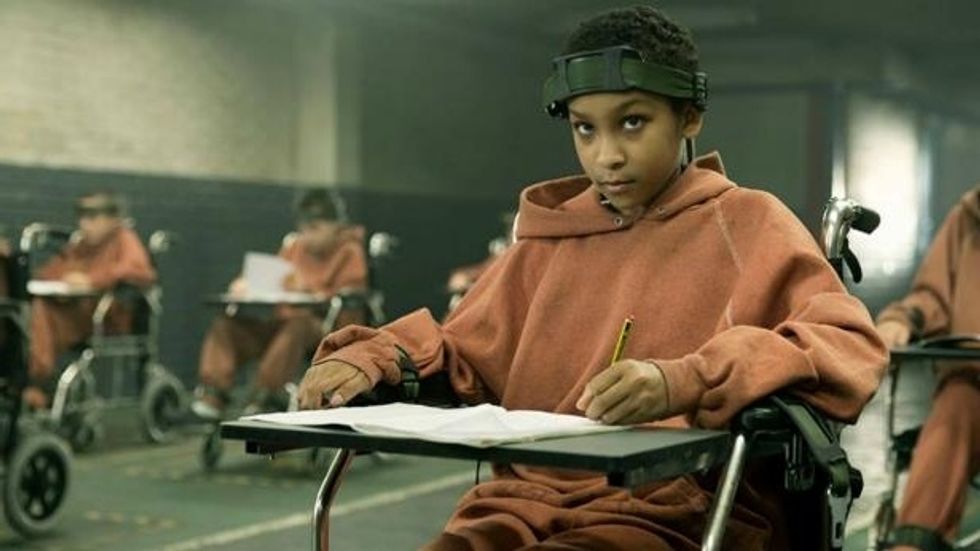
Are there any particular voices or groups you’d like to see highlighted in our current cultural moment?
I absolutely want more QTBIPOC voices. More fat, disabled, neurodivergent folks being heard and respected and humanized. More sex workers, more undocumented immigrants. I want to hear more from the younger generation, too. The people who get silenced the most are the ones who need to be elevated the most.
What’s your everyday routine like? Where do you like to do your work or write?
I’m actually working to embrace my nocturnal nature these days, and I’m fortunate enough to have a career that allows me to do so. What are considered “normal” sleeping hours often serve as my writing time. Some of the best things I’ve written have come pouring out of me between the hours of 3 and 6 am. I’m either writing in bed or on the couch, and I always write on my phone. I sleep as best as I can, if I can, for a few hours and then I’m up and working again by noon. For BYP, I might be publishing in WordPress and/or desperately searching for good stock images of Black people. For WYV, I might be taking care of daily social media management duties, doing secondary edits or final checks on a piece before Lara publishes, creating graphics, and/or designing and sending out our weekly newsletter(s). For both publications, I might be hopping on a staff video or phone call, brainstorming new content, reading and catching up on the day’s news so far, answering emails, evaluating pitches, responding to Slack messages, drafting calls for pitches, organizing my editorial calendar, conducting interviews, checking in with writers, and addressing anything else that requires my attention. The late afternoon and evening is when I rest, recharge, meditate, exercise, and eat. Sometimes, I will do some in-depth editing work on writers’ drafts during this time, but mostly I don’t start doing that kind of work until around midnight. Then, I plan for the next day/night. I admit, sometimes it’s hard to keep track of what day it is.
You do a lot of challenging work. What do you do for fun, and to take care of yourself?
I’m proud to say that I’m much better about taking care of myself now than I used to be. For self-care, I watch horror game play on YouTube because I think it’s more fun to watch other people do it—plus it’s cheaper and less time-consuming. I spend quality time with friends virtually—ironically, all of my closest friends live far away. I SnapChat with my little sister. I take myself to 4 pm matinees in the middle of the week. I laugh with my co-workers. I support and mentor Black kids. I lift weights. I hit my heavy bag. I eat peanut butter fudge sorbet at 3 AM. I write happy things. I listen to podcasts and audiobooks about true crime, folklore, and history. I laugh at nonsensical memes. I block white people with dreadlocks. I drink plenty of water. I take selfies. I spend entire weekends naked, and I don’t let myself work on Saturdays anymore.
You can follow Sherronda J. Brown on Facebook, Twitter, Instagram, Muck Rack, and werdbrew.
Want to be featured on The Visionaries Project, or want to nominate someone you think should be? Email us at [email protected] or message us on Twitter at @LibertyThis.
- Sherronda J. Brown | Wear Your Voice Journalist | Muck Rack ›
- Sherronda J. Brown – Greensboro, North Carolina | Professional … ›
- Sherronda J. Brown – werdbrew ›
- Sherronda J. Brown, Author at RaceBaitr ›
- Sherronda J. Brown is creating pop culture and media analysis … ›
- Sherronda J. Brown | Facebook ›
- Sherronda J. Brown – Wear Your Voice ›
- Sherronda J. Brown, Author at The Black Youth Project ›
- 𝚂𝚑𝚎𝚛𝚛𝚘𝚗𝚍𝚊 𝙹. 𝙱𝚛𝚘𝚠𝚗 (@NotYoAfrodisiac) | Twitter ›



